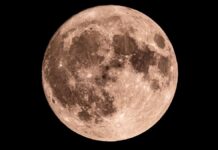Uranus, the distant ice giant, will reach its peak visibility this year on November 21st, offering a rare opportunity for stargazers to spot it – though a telescope is highly recommended. This event, known as opposition, occurs when Uranus is positioned opposite the sun from Earth’s perspective, making it appear brighter in the night sky.
Understanding Opposition
When a planet reaches opposition, it’s at its closest point to Earth, maximizing its apparent brightness. For Uranus, this means a magnitude of +5.6 around November 21st. While technically visible to the naked eye under ideal conditions (extremely dark skies, perfect visibility), binoculars or a telescope with an aperture of at least 8 inches (200mm) will make it significantly easier to locate. To put this into perspective, Venus at its brightest reaches a magnitude of -4.6 – far more visible.
How to Find Uranus in the Night Sky
On the evening of November 21st, look towards the eastern horizon after sunset. The constellation Taurus will be low on the horizon, with the bright Pleiades star cluster shining prominently above it. Uranus will appear as a faint, greenish dot located less than 5 degrees to the lower right of the Pleiades. Use your clenched fist at arm’s length as a rough guide: Uranus will be about half the width of your fist away from the Pleiades.
Why This Matters
Uranus is an unusual planet: tilted on its side, it orbits the sun like a rolling barrel rather than spinning upright like Earth. It’s also incredibly distant, 1.72 billion miles (2.77 billion km) away, and has only been visited once by a spacecraft (Voyager 2 in 1986). Seeing it, even as a tiny point of light, is a reminder of the vastness of our solar system and the mysteries that still await exploration.
Catching Uranus at opposition provides a rare chance to connect with a distant world, prompting reflection on how much remains unknown in the universe.








































